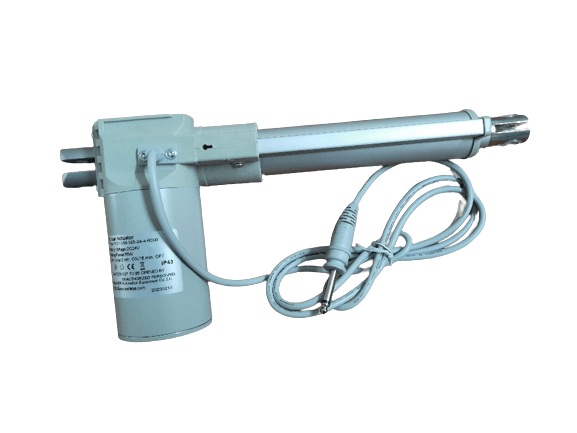Electric Linear Actuators: A Comprehensive Guide
Electric linear actuators are an essential component of many automated systems, providing precise and accurate control over linear motion. In this comprehensive guide, we will discuss the working principle, components, types, and applications of electric linear actuators.

Working Principle of Electric Linear Actuators:
Electric linear actuators work by converting electrical energy into mechanical energy. The motor generates a rotational force that drives the screw, which is connected to the nut. The nut moves linearly along the screw’s threads, resulting in a linear motion. The speed and direction of the linear motion depend on the motor’s speed and direction and the screw’s pitch.
Components of Electric Linear Actuators:
The basic components of an electric linear actuator include a motor, a screw, and a nut. The motor generates a rotational force, which is then transmitted to the screw. The screw is a long rod with helical threads that are either lead screws or ball screws. The nut is a cylindrical component that contains matching threads to the screw. As the screw rotates, the nut moves linearly, resulting in a linear motion.

Types of Electric Linear Actuators:
There are several types of electric linear actuators, each with its unique characteristics and advantages.
- Screw-driven linear actuators: These actuators use lead screws or ball screws to convert the rotational motion of the motor into linear motion.
- Belt-driven linear actuators: These actuators use a belt drive system to transfer the rotational motion of the motor to linear motion.
- Linear actuators with linear guides: These actuators use linear guides to guide the motion of the load.
- Piezoelectric linear actuators: These actuators use the piezoelectric effect to convert electrical energy into mechanical energy.
Applications of Electric Linear Actuators:
Electric linear actuators have widespread and diverse applications. Here are some of the common applications of electric linear actuators:
- Robotics: Electric linear actuators are used in robotics for precise and accurate movement control.
- Medical equipment: Electric linear actuators are used in medical equipment for precision movement control in surgical and diagnostic procedures.
- Aerospace and aviation: Electric linear actuators are used in aerospace and aviation for the precise control of flaps, landing gears, and other critical components.
- Automation: Electric linear actuators are used in industrial automation for material handling, assembly, and packaging.
Advantages of Electric Linear Actuators:
Electric linear actuators offer several advantages over other types of linear actuators. These advantages include:
- Precise and accurate movement control
- High repeatability and reliability
- Easy to integrate with other systems
- Low maintenance requirements
- Environmentally friendly
Conclusion:
Electric linear actuators are a crucial technology that plays a significant role in automation and control systems. They provide precise and accurate control over linear motion and are used in various industries, including robotics, aerospace, medical equipment, and automation. Understanding the working principle, components, types, and applications of electric linear actuators is essential for engineers and designers in various fields. With their widespread applications and versatility, electric linear actuators are a vital component of many automated systems.

